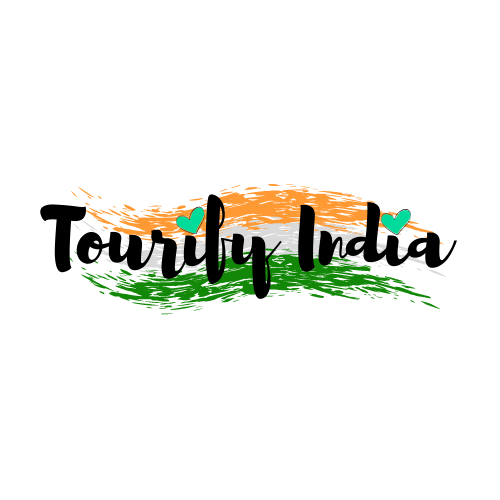Mumbai is the epitome of orchestrated chaos; the bustling metropolis has embraced many migrants over the years. Dharavi, a place in Mumbai that existed way before modern-day Mumbai has been home to hundreds of migrants. Our Dharavi tour will give you a glimpse of the tough life in Dharavi. The slum settlement of migrants has awe-inspiring stories hidden in the narrow lanes and poverty.
It has faced attention from NGOs, news outlets, and celebrities yet remain underdeveloped despite the many efforts to rehabilitate. Despite the harsh conditions, a thriving economy generates businesses worth billions. Well if that surprises you? Let us bring you some surprising facts about the Bombay Dharavi Tour.
The beginning of Dharavi
Dharavi was a fishermen’s island in the 18th century. When the marsh was filled, fishing ceased, and Dharavi gradually turned into the massive metropolitan expanse that it is presently. By the late 1800s, potters from Saurashtra had moved and established their colony (Kumbharwada), as had leather tanners from Tamilnadu. Uttar Pradesh artisans and embroidery workers pioneered the ready-made clothing sector. As a result, Mumbai, the country’s commercial hub with endless employment opportunities, drew individuals from all across the country, regardless of region, class, or gender.
A city within a sprawling city
Dharavi is the second-largest slum in Asia and the largest in India. Situated in the heart of Mumbai, you will find people everywhere on every square inch of the land of Dharavi. Statistics show that a million people live squeezed in over a 2.1 sq km area. Despite the cramped spaces, poor sanitation, and unsafe working conditions, it accommodates everybody and generates billions of sales.
Dharavi is a slum dwelling with a 69% literacy rate, making it the most educated slum. During the past decades, Dharavi has home-grown schools and institutions that educate thousands of students in local and English languages. The slum accommodates schools and institutes that are relatively affordable and are not merely commercial centers of education.
Dharavi is more entrepreneurial that you could think
The leather hub of India
Leather making is a significant profit-making industry of the Dharavi people. It is essential since the leather industry has the highest turnover rate compared with other Dharavi sectors. The craftsmen in Dharavi make leather articles from the skin of goats, water buffalo, and sheep. Animal skins are cleaned over spinning wheels and hung to dry across the narrow alleys in the small workrooms. They are then stamped with designs that resemble other creatures, like snakes and crocodiles, and made into a variety of leather items such as wallets and handbags.
Kumbharwada of Dharavi
Dharavi cannot be discussed without mentioning the Kumbhars. As the name suggests, ‘Kumbhar’ means ‘potters,’ and ‘Wada’ means ‘colony.’ Kumbharwada was one of Dharavi’s first settlements, comprising migrants from the Indian state of Gujarat. Families have earned their livelihood for nearly a hundred years by making beautiful clay artifacts and selling them. Amazingly, for generations, Dharavi craftsmen have been making ceramic bowls, ornamental vases, and diyas that are shipped and sold across the country. Dharavi is known to recycle waste from their industries; the textile industry waste, like the scraps of cloth, is used to create a slow-burning furnace to dry their ceramics.
Dharavi is a green micro-economy
Pickers all over Mumbai look for plastic scraps to sell to Dharavi locals. These slum residents break down plastic, sort it, wash it, dry it, and transform it into little plastic pellets, which are then delivered to plastic producers for recycling.
Workers in Dharavi also recycle metal by cleaning and crushing old auto components and paint cans before reselling them to metal producers. Workers develop new machinery that assists in crushing the raw aluminum down the small alleyways of Dharavi. The recycled metal is transformed into machines and automobile engines, that are used by workers of other businesses.
Dharavi is incredibly creative and inventive.
Dharavi is vibrant, unique, and creative in ways unimaginable. It has an art room aimed to inspire the youngsters of Dharavi to discover reading and art. It features exhibitions and courses that use art to empower disadvantaged children and women. Dharavi Art Room welcomes contributions of books, stationery, toys, and other items. They also hold many fundraising activities, so keep an eye out for those.
Design Museum Dharavi is a unique exhibition facility in the center of Dharavi. This spot highlights Dharavi inhabitants’ abilities. It showcases local items while providing a forum for the creators to empower and build their businesses and livelihood.
Dharavi residents have left no stone unturned! Dharavi is home to many famous break dancers, beatboxers, and rappers. As a result, the slum has developed a strong hip-hop culture, making it a significant contributor to the entertainment sector.
Final Thoughts
Our Mumbai city tour will help you identify that Dharavi is not all about poverty, hardships, and unhealthy living conditions. The narrow alleyways are filled with immensely humble people who earn their livelihood with the utmost hard work. It is with these people that Dharavi is the most important contributor to the country’s economy. Now that you know how Dharavi is a thriving place in Mumbai, pack your bags and book your Dharavi slum tour with us to closely see the lives of humble people.





